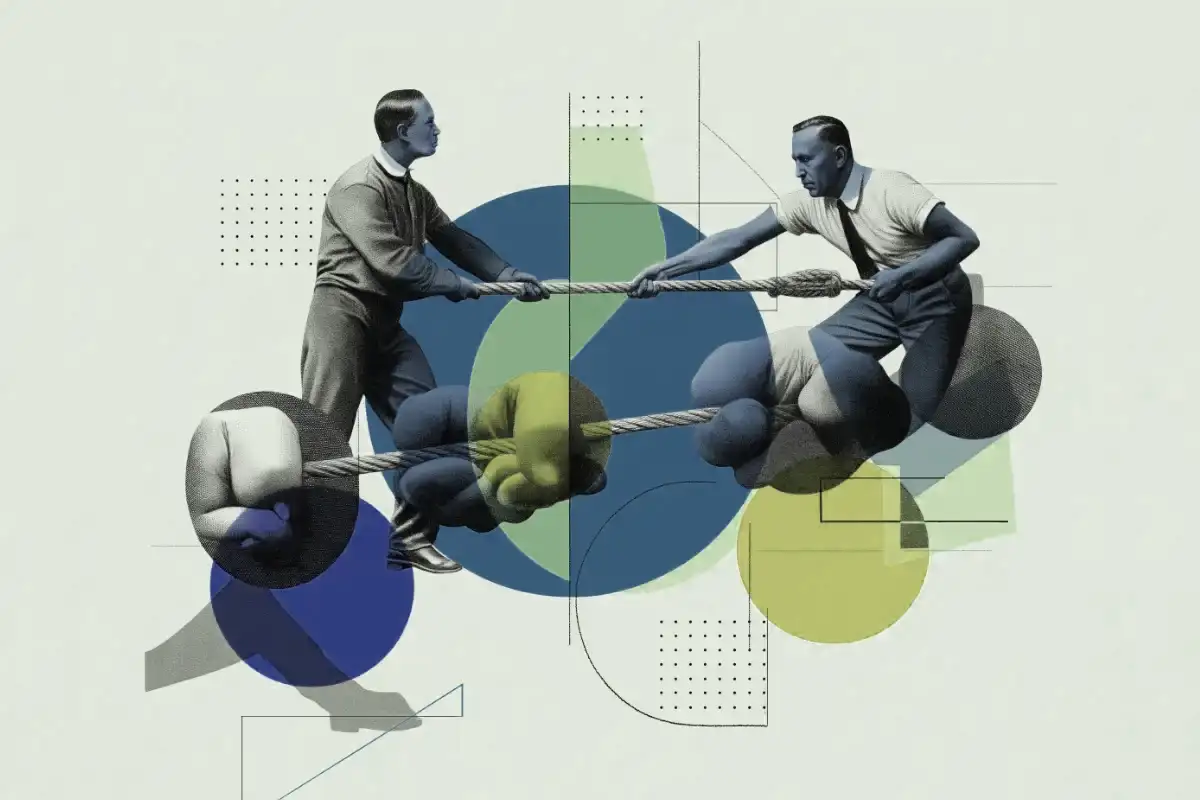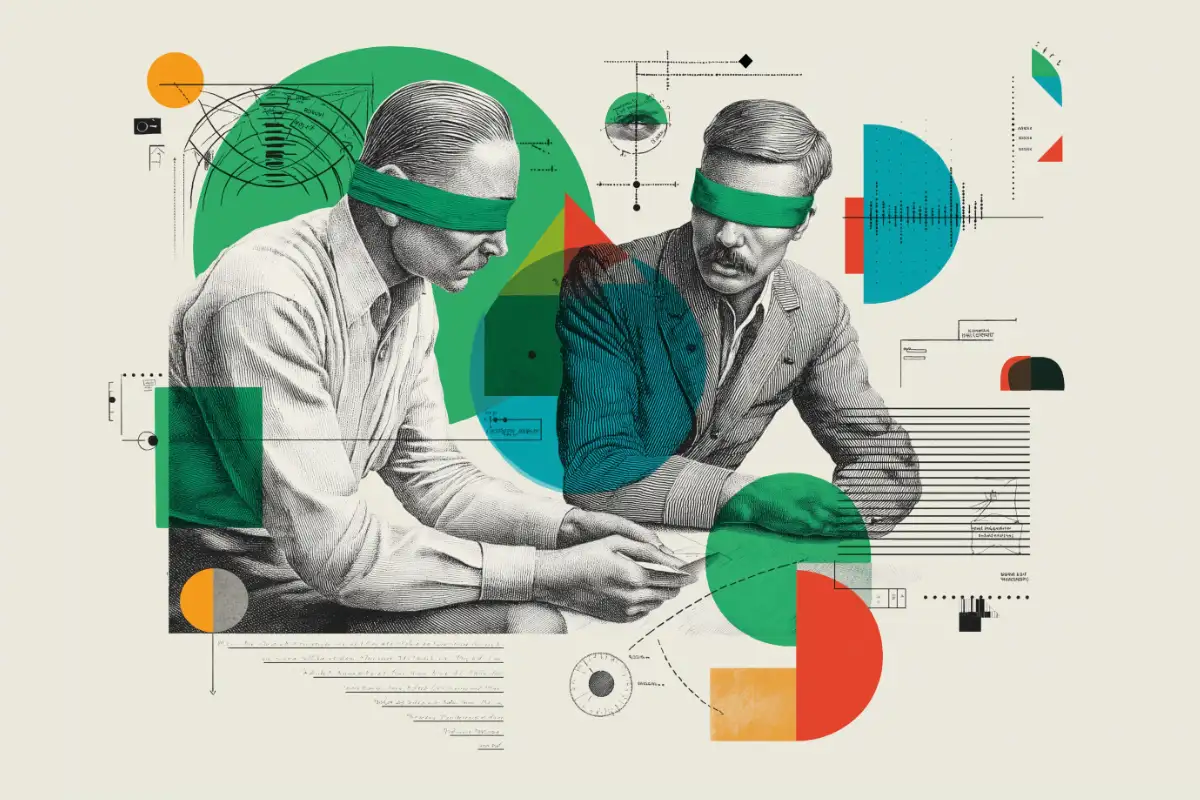Then Monday arrives, and real users start using your new product. Suddenly, there's a gap between your perfect vision and their confused reality.

Our elegant solution had crashed into the messy reality of user expectations. The celebration hangover was quickly replaced by the sobering realization that our job had just begun.
When perfect products
meet imperfect reality.
The hard truth about product development is that launch day isn't the finish line-it's the starting pistol. Studies show that increasing customer retention rates by just 5% can boost profits by 25% to 95%. Yet many companies still pour resources into acquisition while treating retention as an afterthought.
Customer Success teams exist in this gap between expectation and reality. They're not just firefighters putting out support tickets; they're the architects of long-term relationships that determine whether users stay or go.
The invisible work of keeping users.
Our support team was drowning in tickets about the new dashboard. Some users couldn't find features that were clearly (to us) labelled. Others complained about workflows that made perfect sense (again, to us). The friction was everywhere, but the silence from our biggest accounts was the most concerning.
"The quiet ones worry me most," our Customer Success Manager said during our emergency meeting. "They're not complaining-they're just not logging in anymore."
She was right. Data showed our most valuable customers weren't engaging with the new features. They hadn't submitted tickets; they'd stopped using the product. This silent churn is the most dangerous kind.
From reactive to proactive:
The evolution of customer success.
The traditional approach to customer issues has been reactive: wait for problems and then solve them. However, the best customer success teams operate differently. They anticipate friction points before they become dealbreakers.
Our CS team began proactively reaching out to silent users. Instead of asking "How can we help?", they asked specific questions: "We noticed you haven't tried the comparison feature. Would you like a quick walkthrough?" This targeted approach uncovered usability issues we hadn't anticipated during testing.
Meanwhile, our product team made an uncomfortable discovery: features they considered intuitive confused users. The elegant navigation system that had won design praise internally was causing real users to get lost.
Different perspectives
on the same problem.
Our engineering lead viewed the dashboard issues as technical problems requiring code fixes. The design team saw them as UX challenges. Sales were worried about renewal risk and calculated the potential revenue impact.
These perspectives created tension. In one particularly heated meeting, our CTO insisted we needed two weeks to rebuild the filtering system properly. The CS leader countered that we'd lose customers if we didn't provide an immediate workaround. Both were right from their viewpoints, but the conflict needed resolution.
The breakthrough came from an unexpected source- a junior CS representative who suggested a hybrid approach: quick tutorial videos addressing common pain points while engineers worked on permanent fixes. These stopgap measures weren't elegant, but kept users engaged while better solutions were in development.
The tools that bridge the gap.
Customer success teams rely on both technology and human touch. Our team deployed a mix of:
- Proactive outreach based on usage patterns.
- Quick-fix tutorials and workarounds.
- Regular check-ins with high-value accounts.
- Data analysis to prioritize improvements.
The most powerful tool was something less tangible: empathy. The ability to truly understand user frustration, without defensiveness, turned potential detractors into collaborative partners in improving the product.
Measuring what matters.
We started tracking metrics beyond standard NPS and CSAT scores. Customer health scores combining usage patterns, support interactions, and renewal risk provided early warning systems. Customer effort scores helped identify friction points in the product.
Within six weeks, our dashboard usage had recovered and then exceeded pre-launch levels. More importantly, we established new workflows that bridged the gap between engineering cycles and customer expectations.
Lessons from the retention frontlines.
What did we learn from this post-launch crisis?
First, product development doesn't end at launch; that's when the real learning begins. The most valuable product insights often come after users attempt to accomplish real tasks.
Second, silence isn't golden; it's dangerous. Users who complain are still engaged; those who silently disappear represent your most significant retention risk.
Third, customer success isn't just a department, it's a company-wide responsibility. The path forward becomes clearer when product, engineering, sales, and CS teams align around user outcomes rather than internal metrics.
Finally, empathy scales better than you might think. Personal outreach to key accounts created goodwill, giving us time to fix underlying issues.
When customer success becomes strategic.
Six months after our dashboard crisis, something unexpected happened. During our quarterly business review with our largest client, their CIO mentioned that our handling of the dashboard rollout had influenced their decision to expand our contract.
"We were evaluating three vendors," he explained. "All had similar features, but we saw how your team handled problems. That's more valuable than perfect software."
This moment crystallised something our CS leader had been saying: customer success isn't just about putting out fires, it's a strategic growth function. Data backs this up; according to studies, it costs five times more to acquire new customers than to retain existing ones.
The incident prompted a structural change in our product development process. Customer Success representatives now participate in sprint planning and feature prioritisation. This cross-functional collaboration initially created friction, as more voices meant more debate, but ultimately led to products that needed less post-launch firefighting.
The metrics that matter most.
While vanity metrics like user counts get showcased in company all-hands meetings, CS teams track different numbers. Customer health scores, net promoter scores, and retention rates tell the real story of product success.
We developed a "friction log" where CS documented every point where users struggled. This became our product team's prioritisation guide, balancing new feature development with usability improvements. Sometimes the highest-impact work wasn't building something new, but making existing features more intuitive.
The silent churn we'd feared most became measurable through engagement metrics. We established early warning systems alerts triggered when usage dropped below specific thresholds, enabling intervention before customers disappeared.
The human element in a data-driven world.
While data drove our decisions, the human touch proved irreplaceable. One enterprise client struggled with the new dashboard until our CS manager spent a virtual afternoon with their team, watching their workflow and suggesting adjustments. No amount of in-app tutorials could have provided that contextual guidance.
Even in the age of AI-powered support (which now handles over 50% of routine inquiries for many companies), the complex, nuanced interactions that build lasting relationships still require human intelligence and empathy.
The cultural shift.
The most significant change was cultural. Launch celebrations became more measured, acknowledging that they marked the beginning of the real work rather than its conclusion. Post-launch reviews became as important as pre-launch planning.
The "us versus them" mentality between product development and customer-facing teams gradually dissolved. We developed a shared vocabulary for discussing user challenges without assigning blame. When a client reported confusion about a feature, we stopped asking "What did the user do wrong?" and started asking "What did we miss in our design?"
This shift wasn't always comfortable. It required engineers to accept that elegant code sometimes created clunky experiences, and it required CS teams to translate vague user frustrations into actionable feedback.
The future of customer success.
As we look ahead, the line between product development and customer success continues to blur. The most effective organizations don't view them as separate functions but as different aspects of the same mission: creating value that keeps users engaged.
The customer success function is evolving beyond reactive support toward proactive partnership. The best CS professionals don't just solve immediate problems; they help customers achieve outcomes they haven't even articulated yet.
In a world where switching costs are decreasing and alternatives abound, the companies that thrive will be those that view the post-launch phase with the same strategic importance as development itself. They'll recognize that keeping users happy-or at least productive while issues are addressed-isn't just about avoiding churn; it's about building the foundation for sustainable growth.
Our dashboard crisis taught us that product launches aren't endpoints but waypoints on a longer journey. The real measure of success isn't how users respond on day one, but whether they're still with you-and ideally, more deeply engaged-a year later.
The line between product development and customer success continues to blur as we look ahead. The most effective organisations don't view them as separate functions but as different aspects of the same mission: creating value that keeps users engaged.
The customer success function is evolving beyond reactive support toward proactive partnership. The best CS professionals don't just solve immediate problems; they help customers achieve outcomes they haven't even articulated yet.
In a world where switching costs are decreasing and alternatives abound, thriving companies will view the post-launch phase as having the same strategic importance as development. They recognise that keeping users happy or at least productive while addressing issues isn't just about avoiding churn but building the foundation for sustainable growth.
Our dashboard crisis taught us that product launches aren't endpoints but waypoints on a longer journey. The objective measure of success isn't how users respond on day one, but whether they're still with you and, ideally, more deeply engaged a year later.

